PhD students
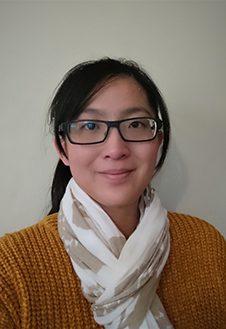 Yi-lin Chen
Yi-lin Chen
BA (National Taiwan University), MA (Otago)
Investigating the plant economics of Neolithic Taiwan: an archaeobotany case study of the Wansan Site, northeast Taiwan
It is often assumed that Neolithic peoples in Taiwan practiced slash-and-burn agriculture for root, tuber, grain and fruit crops as early as the Neolithic Dabenkeng (TPK) Culture (5000-6000 years ago). Over the years, the discussion has focused on the horticulture of rice and millet, while the potential usage of tubers and tree crops has not been explored. This research will re-examine the model of Taiwanese Neolithic plant use through the identification and analysis of charcoal remains excavated from the archaeological site of Wansan, northeast Taiwan. A small-scale microfossils study is also proposed to examine the utilization of selected crops that have economic importance to prehistoric Austronesian societies.
Email cheyi087@student.otago.ac.nz
Supervisors: Professor Ian Barber and Associate Professor Anne Ford
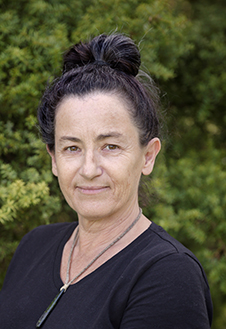 Lisa Mckendry
Lisa Mckendry
BA, MA (Auckland)
Māori Archaeological Textiles: An Investigation of Māori Textiles from Cave Sites at Te Rae Kura (Redcliffs), Canterbury
Archaeological Textiles represent one of the earliest technologies developed by humans and were a fundamental component of food, clothing, and housing. Textiles hold potential information about past human behaviours through the materials, the type of objects, the range of manufacturing processes and decorative elements, as well as the contexts in which manufacture and use/re-use and discard occurred. Textiles are constructed from various raw materials and with diverse techniques, such as, knotting, twisting, plaiting, twining, weaving, and sewing. A chaîne opératoire framework allows for the clear identification of these diverse technological processes within predetermined production sequences. As part of a holistic approach including archaeological science, ethnographic and customary knowledge, and practical experience this framework facilitates an investigation of the multifaceted, dynamic relationship between people and textiles.
Email mckli495@student.otago.ac.nz
Supervisors: Associate Professor Catherine Smith and Professor Richard Walter
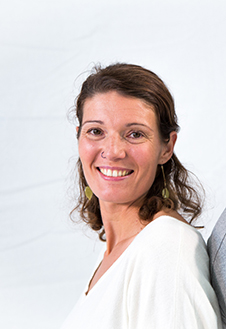 Anne-Claire Mauger
Anne-Claire Mauger
BA (Nantes), BA(Hons) (Bourgogne), MA (Montpellier)
Pounamu production and the archaeology of Māori society in East Otago / Ko te whakairo o te pounamu mō te mātai whaipara tangata o te porihanga Māori ki te tai rāwhiti o Otago
In the 19th and 20th centuries, multiple campaigns of fossicking on the east coast of Otago have extracted a large quantity of pounamu, with little regard to the tangata whenua and the archaeological context. The chronological background of these sites remains unknown, especially the framework of innovation in pounamu technology, and the society that enabled its change through time. This project aims to reconstruct manufacturing processes by examining debris and surface traces, and to compare with experimental and ethnographic data. This thesis also proposes to analyse radiocarbon information from archaeological sites, by using Bayesian modelling, to reexamine the chronology of technological change in pounamu manufacture. The research will assess the correlation between the implementation of innovative technology towards standardisation, and the control over specialised manufacture of prestige products by social regulations, guided by the following question: when and how did pounamu become a significant taonga in southern Māori society?
This research is funded by a Fanny Evans scholarship.
Email mauan555@student.otago.ac.nz
Supervisors: Professor Ian Barber and Associate Professor Anne Ford
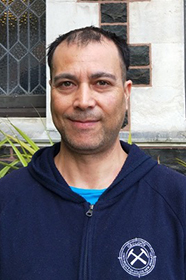 Carl Murray
Carl Murray
BSc, BA(Hons) (Otago)
Made in Stone: A case study of stone masonry structures on the Hereweka/Harbour Cone Block, Otago Peninsula, New Zealand
The use of stone throughout the early European settlement period of Otago, is not well documented and has not been thoroughly researched. The foundations of Dunedin are made from quarried stone that was available in and around the city, some of this has been recorded but most of it has not. The research I am currently doing seeks to understand the stone and mortar used in historic stone masonry structures that are associated with early European settlement around Dunedin. Detailed recording and analyses of stone masonry structures will be conducted on several sites in the Hereweka Harbour Cone area of Portobello, to better understand the materials the early settlers were using, as well as the technologies they were adapting to these foreign materials. Stone and mortar samples will be taken from the sites and analysed using petrological methods from the discipline of geology, to better understand the use of these materials and to potentially locate the original material sources.
This research is funded by a University of Otago Doctoral Scholarship.
Email murca684@student.otago.ac.nz
Supervisors: Professor Glenn Summerhayes, Dr Peter Petchey and Professor James Scott (Geology)
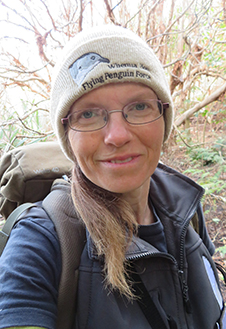 Brooke Tucker
Brooke Tucker
BA(Hons), MA (Otago)
An Archaeological Examination of the Occupation of Rakiura and the Islands of Te Ara-a-Kiwa in the Pre-contact Period
This research contributes to the culture-history of a region of New Zealand that is not well known archaeologically. When referring to Te Ara-a-Kiwa (Foveaux Strait), archaeologists have generally followed ethno-historic models incorporating the islands and coastal mainland within the wider Murihiku interaction sphere observed during contact and post contact periods. However, this dynamic cannot be assumed for initial colonisation. An examination of island sites within the Strait (The Neck, on Rakiura, and Sealers Bay Camp, on Whenua Hou) will provide an “archaeology of starting points” for discussions of island archaeology, strategic migration, and interaction networks, and will investigate the role of "marginal regions" in models of colonisation and cultural trajectories over the duration of Murihiku's occupation.
This research is funded by a University of Otago Doctoral Scholarship and has also been assisted by a Skinner Fund grant (2019) from the Royal Society of New Zealand.
Email dicbr464@student.otago.ac.nz
Supervisors: Professor Richard Walter and Dr Karen Greig
MA students
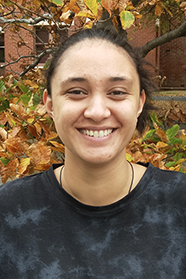 Sabre Baker-Anderson
Sabre Baker-Anderson
BA, BA(Hons) (Otago)
An archaeozoological analysis of Cape Kidnappers: insight into patterns of life in the Hawke's Bay 1400-1600 AD
The Hawke's Bay region situated on the east coast of the North Island has had little archaeological investigation. Although there have been a few important studies examining pre-European sites in the Hawke's Bay, these have focused on pā sites after 1500 AD. Consequently, not much is known about the earlier patterns of settlement, mobility, diet and subsistence before a characteristic Māori way of life developed in this region. The purpose of this thesis is to start remedying this by analysing the faunal material excavated from Cape Kidnappers (Te Matau-a-Māui), a coastal site east of Hastings dating to around 1400-1600 AD. This provides an opportunity to examine the early lifeways of people in the Hawke's Bay after Polynesian settlement but before a distinctive Māori society had emerged.
This research is funded by the University of Otago Māori Master's Research Scholarship.
Email baksa159@student.otago.ac.nz
Supervisors: Professor Richard Walter and Dr Karen Greig
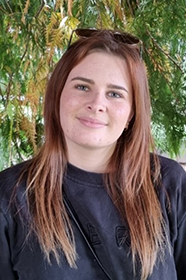 Nève Beens
Nève Beens
BA(Hons) (Otago)
An archaeological analysis of the shell midden material from site Dav3 at Davage, Papua New Guinea
Davage is a site on the southern coast of Papua New Guinea in what is today the Port Moresby region. The site has ties to the hiri trade network through Western Motu oral histories and the ethnographic record. Despite its significance to the Southern Papuan Coast, Davage has had no published archaeological data on its shell midden material. This thesis will provide a tangible link between Davage and the southern coast cultural sequence through its molluscan taxa. Although there have been many studies on shell midden material on the Southern Papuan Coast, these studies have primarily focused on shell for subsistence and shell for artefacts as two separate entities. A holistic approach will be taken, to include manufacturing debris as well as artefactual shell that was used for subsistence prior to being modified, to ensure a complete analysis. This will provide a framework to better understand shellfish exploitation at Davage.
Email beene625@student.otago.ac.nz
Supervisor: Associate Professor Anne Ford
Adelie Filippi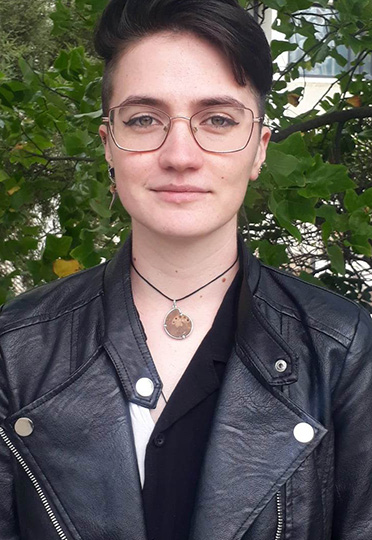
BASc, BA(Hons) (Otago)
Māori plant subsistence and medicine - a study at Cook's Cove, Tolaga Bay
Located at Tolaga Bay, Te Ika a Māui, Cook’s Cove is one of the rare sites in Aotearoa whose use spans the breadth of Māori occupation of New Zealand. Microbotanical analysis has seen previous use at the site, with this study seeking to expand upon existing works, applying phytolith analysis in the hopes of gleaning further information about plant-human interactions. The project has two primary goals — to analyse and identify evidence of early Polynesian-plant relationships from Cook’s Cove sediments; and to collect reference material of traditional Māori medicinal plants, testing whether their remains can be identified using phytolith analysis.
Supervisors: Dr Karen Grieg and Dr Monica Tromp
Email filad506@student.otago.ac.nz
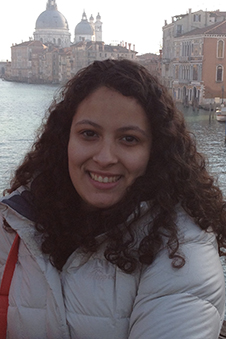 Natalia C Lopes
Natalia C Lopes
BA, BA(Hons) (Otago)
Trade or Manufacture? Using geochemical analysis to source pottery from Popo, Orokolo Bay, Papua New Guinea
The ancestral site of Popo at Orokolo Bay, Papua New Guinea, appears to be one of the first Gulf sites to participate in the hiri, an annual long-distance trading voyage where pots and shell valuables from the Port Moresby area were taken to the Gulf by lagatoi canoes in exchange for sago. The site of Motupore in Bootless Bay, around 15km east of Port Moresby has been argued to be one of the manufacturing centres of the hiri and the source for most pottery excavated at Popo on stylistic grounds. However, Motupore is one of the only pottery manufacturing sites in the region, contemporaneous with Popo that has been extensively excavated by archaeologists. This thesis conducts a geochemical analyses of the pottery of Popo through the Scanning Electron Microscope (SEM) to eliminate assumptions of the pottery's origin caused by a lack of archaeological excavations on contemporaneous pottery making sites.
Email cosna637@student.otago.ac.nz
Supervisor: Associate Professor Anne Ford
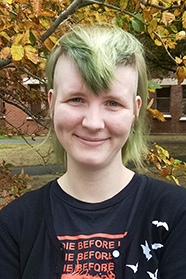 LilliKoko Muller-Murchie
LilliKoko Muller-Murchie
BSc, PGDip (Otago)
Gone Batty: Using bats as proxies for climatic and human-induced changes during the transition from late-Pleistocene to mid-Holocene in Papua New Guinea.
The Pleistocene to Holocene transition in Papua New Guinea (PNG) was a period of both fluctuating climate and movement of fauna and modern-day humans into new accessible areas, including the altitudinally locked highlands and offshore islands. One species present throughout PNG that has an important relationship with both the environment and people throughout the Pleistocene to Holocene is the bat (Order Chiroptera). Today bats are present throughout the entirety of PNG. This presence is also reflected within the archaeological site assemblages, from both highland and offshore. By implementing bats as proxies for climatic and human induced changes a cranial morphometric analysis will be undertaken upon bat assemblages from several sites. Thus, determining whether any morphometric changes occurring within the bat assemblages can be identified as occurring through climatic or human induced pressure during this transitional period.
Email mulli302@student.otago.ac.nz
Supervisors: Professor Glenn Summerhayes and Associate Professor Anne Ford
 Eliza Thompson
Eliza Thompson
BA(Hons) (Otago)
South Island East Coast settlement: A faunal analysis of the Kaikoura Fyffe site
The Fyffe site is one of a number settlement period archaeological sites found along the east coast of the South Island. It was excavated in 1973 and 1982 and is thought to be the earliest settlement site in the Kaikoura region. Though excavated decades ago, the Fyffe site assemblage has never been fully studied. The aim of this thesis is to study the faunal midden material excavated in order to situate the site within the broader settlement phase of the east coast of New Zealand. The proposed research will test the idea that Kaikoura was also a node in an early resource network that may have had a role in linking sites between Wairau Bar and the Banks Peninsula. Such a study is important because it bears on fundamental questions relating to the early dispersal of populations.
This research is funded by a University of Otago Masters Research Scholarship.
Email thoel478@student.otago.ac.nz
Supervisor: Professor Richard Walter
 Oliver Walne
Oliver Walne
BA(Hons) (Otago)
A Geochemical Analysis of Soils from Site T11/2789, Cooks Beach
Excavated in 2015, T11/2789 was a 13ha site located in Cooks Beach in the Coromandel Peninsula. A large portion of the site consisted of anthropogenic soils which appeared to be modified for agriculture. By using geochemical methods performed in similar studies overseas, such as XRF and pH analysis, it may be possible to discern how human activity at the site was captured in the enrichment of elements in the soil record. The aim is to characterise how agricultural soils were modified by Māori in order to improve the growing conditions for cultivars in coastal dune environments. This investigation builds on a literature review from my BA(Hons) dissertation on the chemical analysis of soils and sediments in New Zealand. The review concluded that soil chemistry is an underutilised resource in New Zealand archaeology.
Email oliver.walne@postgrad.otago.ac.nz
Supervisors: Professor Ian Barber and Dr Francisco Barraza (Geography)
Jasmine Weston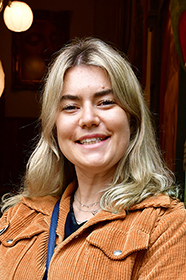
BA(Hons) (Otago)
The Impact of Earthquakes on Archaeological Sites in Aotearoa
Aotearoa has a long history of devastating earthquakes affecting buildings, roading, and other infrastructure across the country. Some of the physical hazards caused by earthquakes include tsunamis, landslides, ground movement, fire, surface fault rupture, liquefaction and flooding, all of which can cause damage to archaeology. This project aims to create a predictive model that forecasts the impacts of large-scale earthquakes on archaeological sites. This forecast will then be applied to the Alpine Fault Magnitude 8 Scenario to demonstrate impacts of this event on the known archaeology. Evaluating the impacts of earthquakes on archaeological sites is an important question to ask in the attempt to work tofuture-proof Aotearoa's cultural heritage
Email jasmine.weston@postgrad.otago.ac.nz
Supervisors: Dr Karen Grieg, Dr Nicola Litchfield (GNS Science)
Master of Archaeological Practice students
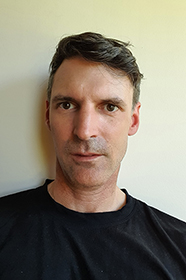 Jovan Andric
Jovan Andric
BA (Copenhagen), BCon (Unitec Auckland), DipMS (Bay of Plenty Polytechnic)
I trained and worked as an archaeologist in Denmark before becoming a construction project manager and am currently employed with an engineering consultancy. Now I wish to utilise both skill sets as a consultant archaeologist and I see the Master of Archaeological Practice degree as a pathway to becoming a registered archaeologist in New Zealand. My BA research project concerned the analysis of the flint assemblage from a Late Paleolithic site. Other than CRM and research excavation work in Denmark, I was involved in marine and experimental archaeology. I was a member of a team surveying wrecks and sunken Stone Age sites and in a group which conducted an environmental study which involved a series of scientific monitoring and observational studies over a winter period occupying a replica Iron Age farm.
Dissertation to commence semester 1, 2022
Email andjo894@student.otago.ac.nz
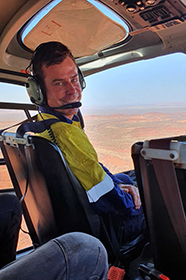 Nigel Bruer
Nigel Bruer
BArc, GradDipCultHerMgmt (Flinders University)
I began my career in Archaeology in Western Australia, working closely with Aboriginal communities to record heritage sites across the state, with a focus on the Pilbara region. Now based in Christchurch, I'm working as a consultant archaeologist in Canterbury with most of my time having been spent working on Pākehā archaeological sites. I have a strong interest in the application of GIS in archaeology and the insight it can provide into site patterning and its use in archaeological management practices.
Dissertation to commence semester 2, 2023 - S1, 2024
Email bruni568@student.otago.ac.nz
Vanessa Clark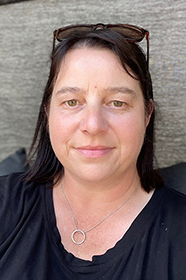
BA (Otago)
The impact of sea level rise and vertical land movement predictions on coastal otago archaeological sites.
The effects of climate change will inevitably have a major impact on New Zealand archaeology and will influence our ability to broaden our knowledge of early settlement in New Zealand. This research will focus on what archaeological sites in the coastal Otago region are at risk from rising sea levels, vertical land movement and climate change weather events, and to what extent could information from these sites potentially contribute to filling gaps in our knowledge of New Zealand's archaeological record? This study will seek input from the archaeological community on the potential value of archaeological sites in coastal Otago and will assess how recent sea level rise and vertical land movement predictions may affect them.
Supervisor: Dr Karen Greig
